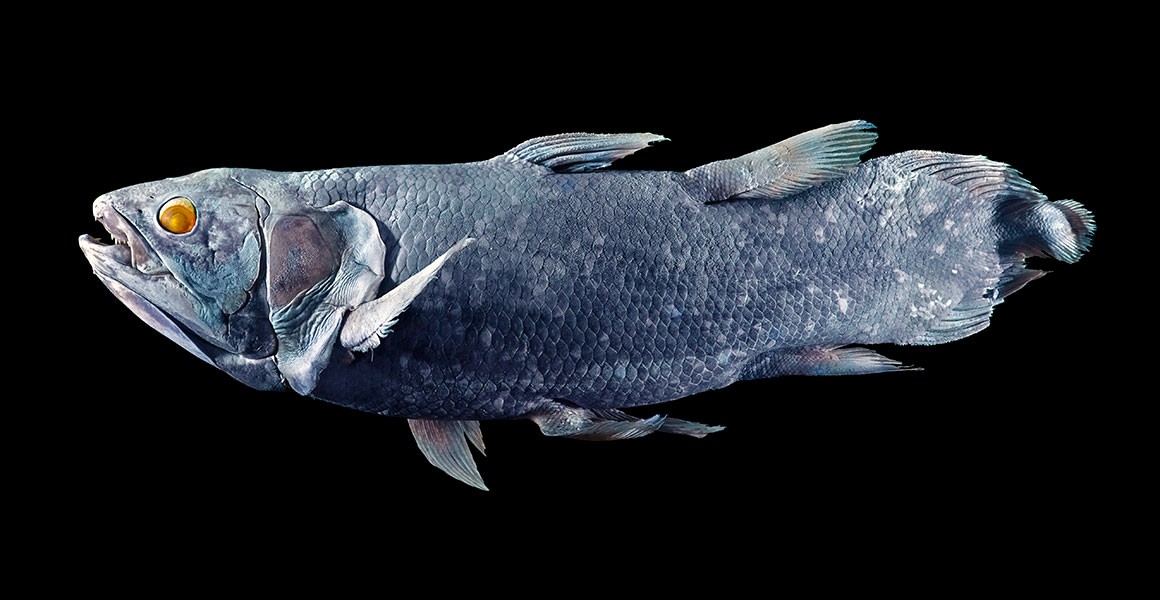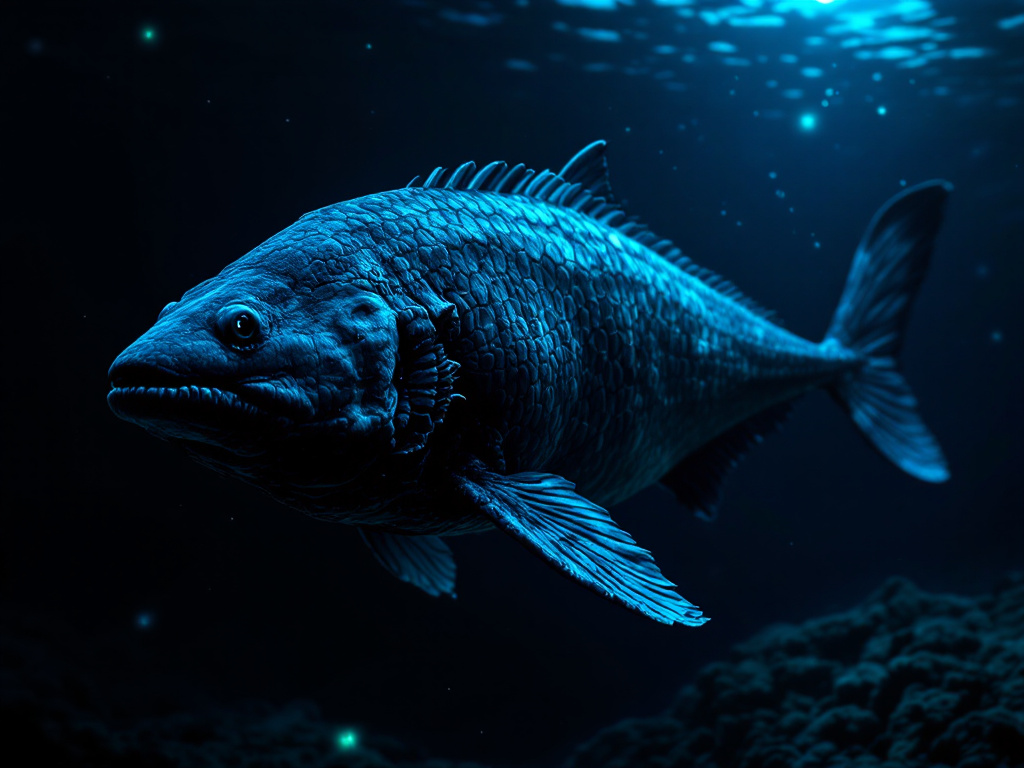In the dark depths of the ocean, where sunlight fades into an eternal twilight, creatures exist that seem to defy time itself. Among them, a legendary fish has emerged from the folds of history, baffling scientists and redefining what we thought we knew about the evolution of life. Its name is the coelacanth: a living fossil, a solitary traveler from a remote epoch, surviving the catastrophe that wiped out the dinosaurs and remaining hidden in the ocean depths for millions of years.
Its discovery in 1938 shocked the scientific community. No one had ever imagined that a creature believed to be extinct for 65 million years could still swim in the Earth's waters. How did it manage to survive undisturbed for so long? And what secrets does its DNA hold, so closely related to the ancestors of terrestrial vertebrates?
An Unexpected Encounter with the Past
On December 22, 1938, off the coast of South Africa, Captain Hendrik Goosen made an unexpected catch in his fishing nets. Among sharks and other marine creatures, an unusual-looking fish caught the attention of Marjorie Courtenay-Latimer, curator of the East London Museum. Its elongated body, thick steel-blue scales, and fleshy, lobed fins—unlike those of any known fish—hinted at an extraordinary discovery.
Ichthyologist J.L.B. Smith, contacted shortly after, could hardly believe his eyes: it was a coelacanth, a member of the Coelacanthidae family, thought to have gone extinct at the end of the Cretaceous period. The discovery opened a new chapter in marine biology, proving that the oceans still hold unexpected secrets.
In the following years, a second specimen was found in the waters of the Comoros Islands in 1952. Since then, coelacanths have been spotted in other locations, including Indonesia, suggesting that, although their population is small, they are distributed in various parts of the ocean.

Marjorie Courtenay-Latimer and coelacanth, c.1938 © East London Museum.
A Living Fossil: Between Evolution and Survival
The coelacanth belongs to the order Coelacanthiformes, a group of bony fish that appeared around 400 million years ago. Its most extraordinary feature is its lobed fins, articulated in a way similar to the limbs of tetrapods, the first vertebrates to colonize land. This makes it a key species for understanding the evolution of terrestrial vertebrates.
Unlike most fish, the coelacanth has a divided skull with an intracranial joint, allowing it to widen its mouth unusually to catch prey. Additionally, it possesses a rostral organ, a kind of sixth sense that enables it to detect electric fields and sense movement in the deep, dark waters.
Despite its primitive appearance, genetic studies have shown that the coelacanth has continued to evolve, though at a much slower pace compared to other species. Its genome was sequenced in 2013, revealing surprising similarities with the ancestors of terrestrial vertebrates.

Coelacanths was found alive in 1938
A Survivor in Danger
The coelacanth is a deep-sea inhabitant, living between 150 and 700 meters below the surface, often in underwater caves. It is a nocturnal and long-lived species, with an estimated lifespan of up to 100 years. Its metabolism is extremely slow, making it particularly vulnerable to environmental changes and accidental fishing.
Classified as critically endangered by the IUCN (International Union for Conservation of Nature), the coelacanth risks disappearing forever due to bycatch in fishing nets, habitat destruction, and climate change. Although conservation projects have been initiated, its population remains fragile and difficult to monitor.
The Mystery Continues
The story of the coelacanth is a lesson in humility for science: it reminds us that, despite our technological advances, the oceans still hide mysteries waiting to be discovered. This prehistoric fish, having escaped extinction and remained in the shadows for millions of years, continues to tell us the story of evolution in a unique and unexpected way.
Research on the coelacanth is far from over. What other secrets lie hidden in its DNA? Are there still unknown populations in unexplored parts of the planet? While scientists search for answers, the coelacanth remains an icon of mystery and the resilience of life on Earth.








Leave a Comment